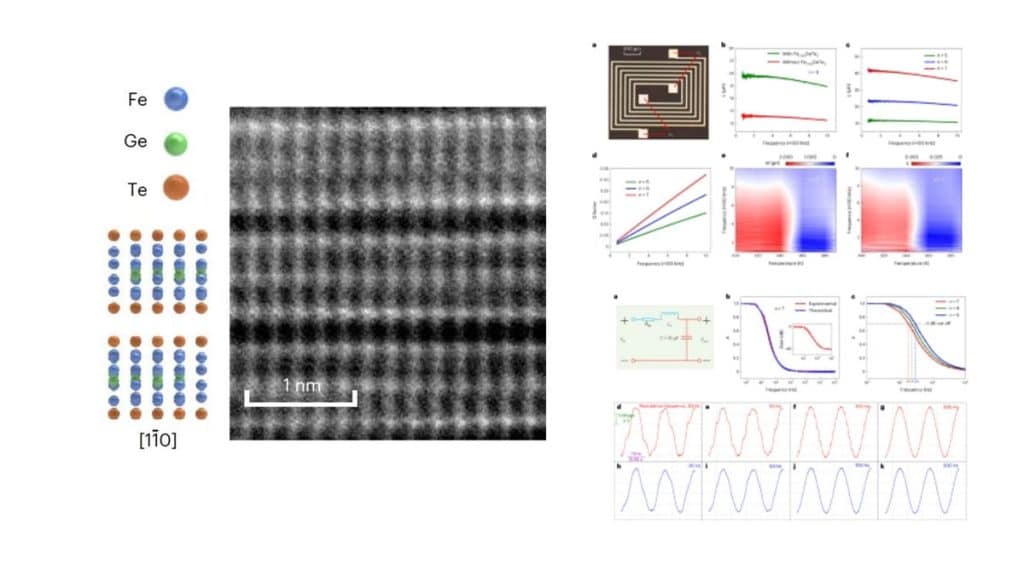Researchers at Fudan University, the Shanghai Qi Zhi Institute and other institutes worldwide recently created new low-pass filters using films of a 2D van der Waals material that they engineered to exhibit a higher Curie temperature. These filters, presented in a paper published in Nature Electronics, were found to achieve remarkable performances despite their smaller size.
Two-dimensional (2D) magnets, also known as magnetic van der Waals materials, have advantageous electrical and mechanical properties, such as antiferromagnetic or ferromagnetism. These properties make them particularly promising for the development of new technologies and systems, including spintronic devices and 2D nanoelectromechanical systems (NEMS).
For instance, 2D magnets could be used to improve the performance and reduce the size of planar inductors, tiny nanoelectromechanical devices that can be applied to many real-world problems. By integrating these devices with capacitors, electronics engineers can also create filters that can detect and process wireless communication signals.
Theoretically, incorporating 2D magnetic materials into these filters could help to reduce their size and power consumption. However, most 2D ferromagnets that could be used to create these filters have low Curie temperatures, which hinders their application in this area.
“The low Curie temperature of most 2D magnets limits practical applications,” Zihan Li, Shanshan Liu and their colleagues wrote in their paper. “We report van der Waals ferromagnetic low-pass filters based on wafer-scale iron germanium telluride (Fe5+xGeTe2) thin films grown by molecular-beam epitaxy.”
The researchers created the 2D ferromagnetic films used in their study using a technique known as molecular-beam epitaxy growth. The films were grown on sapphire in an ultrahigh-vacuum molecular-beam epitaxy system at high temperatures.
Li, Liu and his colleagues showed that the Curie temperature of their films could be adapted via in situ iron doping. This process entails the introduction of iron into a material to alter some of its properties.
“We show that the Curie temperature of the Fe5+xGeTe2 system can be continuously modulated from 260 to 380 K via in situ iron doping,” Li, Liu and their colleagues wrote in their paper. “Few-layer Fe5+xGeTe2 is used to fabricate planar spiral inductors, with the 2D magnetic core providing inductance enhancement of 74% at room temperature compared with an inductor without the core.”
Li, Liu and his colleagues then combined the 2D magnet-based inductors they developed with capacitors to create low-pass Butterworth filters. When they evaluated these filters, they found that they achieved very promising results, suggesting that they could ultimately be integrated with real-world wireless communication systems.
“The filters offer a broad dynamic range of around 40 dB, and the –3 dB cut-off frequency can be tuned from 18 to 30 Hz by using different inductors in the inductance–capacitance circuit,” Li, Liu and their colleagues wrote in their paper.
The recent study by this team of researchers demonstrates the possibility of using 2D ferromagnets with a high Curie temperature to create inductors and potentially other nanoscale NEMS devices. In the future, it could inspire other research groups to develop other nanoelectromechanical devices using similar methods and material synthesis processes.
More information: Zihan Li et al, Low-pass filters based on van der Waals ferromagnets, Nature Electronics (2023). DOI: 10.1038/s41928-023-00941-z
Journal information: Nature Electronics
